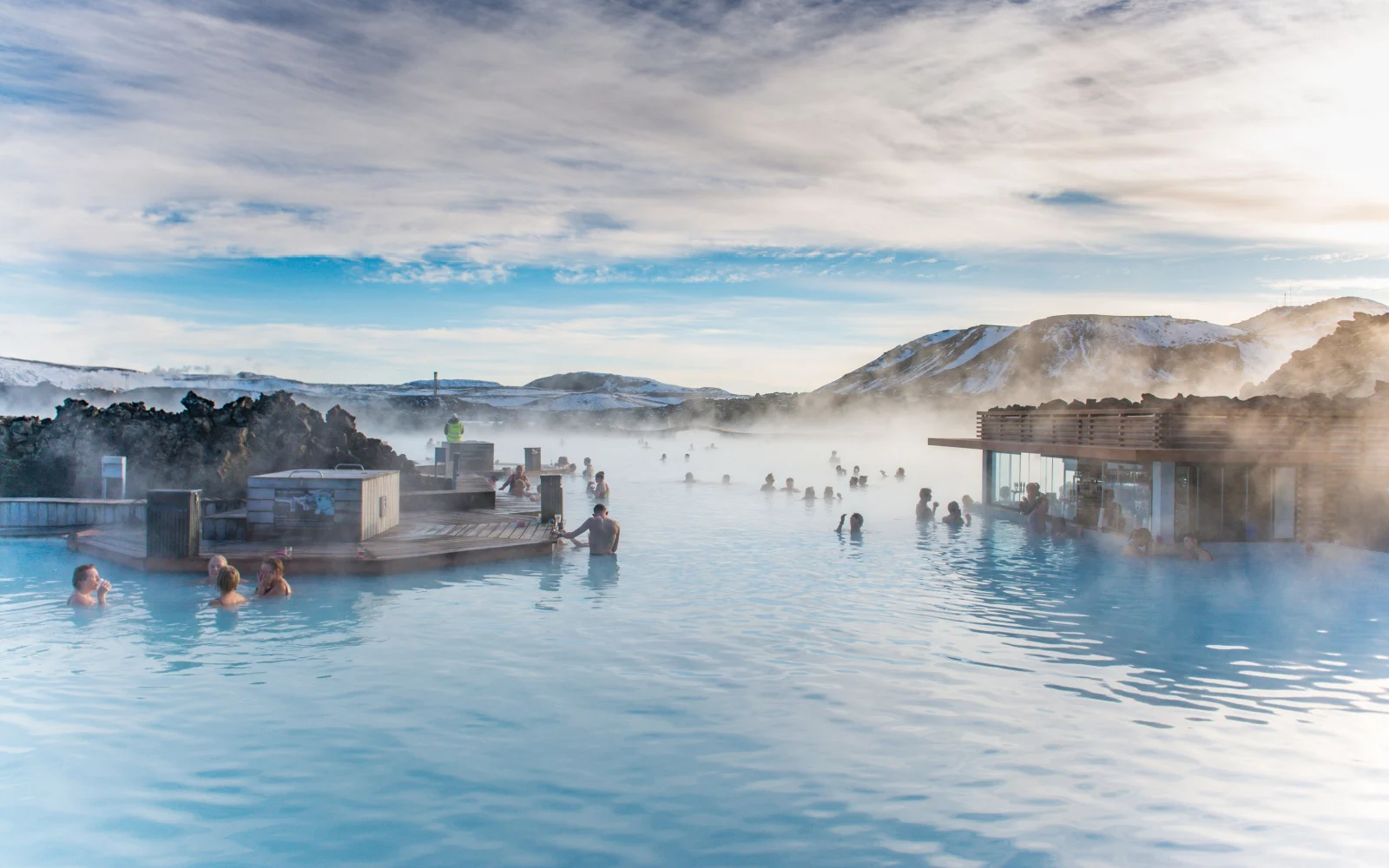What's the best time to visit the Blue Lagoon?
Are you planning a life-changing trip to Iceland soon? It’s important to do a lot of research before planning your trip to Europe to ensure you get the best weather, prices, and understand the best places to visit.
There’s a lot to love about this magnificent country, but one of the greatest tourist attractions is the Blue Lagoon Iceland Resort & Spa, which you can visit in Southwestern Iceland. So when you know the best time to visit the Blue Lagoon, you can relax and return from your trip feeling bliss.
We’ll show you the best time to visit the Blue Lagoon, no matter what time of year you consider visiting Iceland. Plus, we’ll guide you through the worst time to visit the Blue Lagoon and learn traveler tips to ensure you have the perfect trip to Iceland.
The Best Time to Visit Blue Lagoon, Iceland
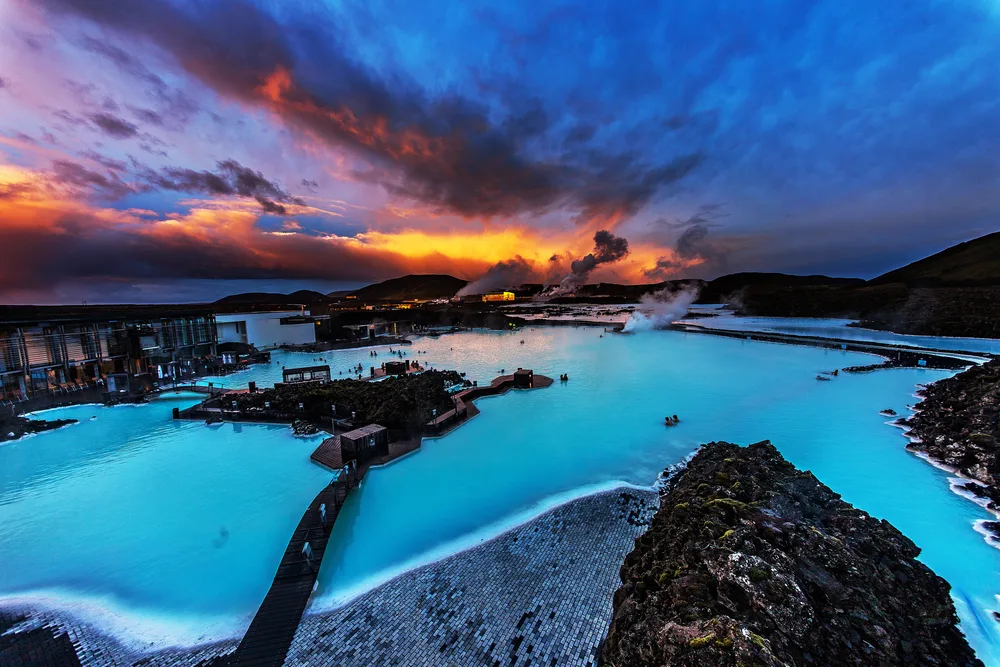
Bhushan Raj Timla/Shutterstock
The best time to visit the Blue Lagoon is during the winter, between November and February. It’s open year-round, but the best time to visit is when you can enjoy the warm water. During these months, temperatures average between 33 and 35 degrees.
Winter is the time of year when Iceland sees the least amount of tourists. However, the weather is coldest during that time of year, and many people don’t want to be outdoors in the frigid cold.
However, you’ll forget about the cold once you step foot in the water and experience the restorative effect.
You can always visit this geothermal spa when the sun goes down. Finally, if you’re fortunate enough to visit Iceland during the winter, there’s a chance you can see the Northern Lights from the Lagoon.
Winters have the longest nights in Iceland, so there’s more of a chance to see the Northern Lights. Usually, sightings are common between 11 pm and 2 am. However, if the conditions are good, there’s a chance to see them before the Lagoon closes for the night.
Cheapest Time to Visit Blue Lagoon, Iceland
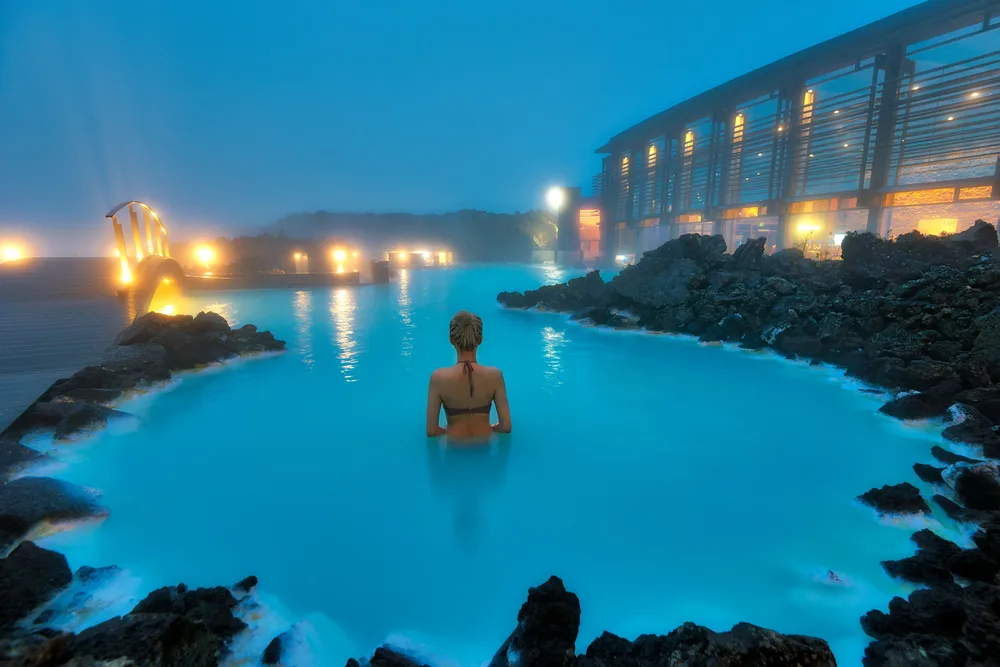
Lukas Bischoff Photograph/Shutterstock
The cheapest time to visit Iceland is during the off-season between September and November and January and May. In January, the temperatures can drop to 14 degrees. As the weather progresses to spring, it will average 44 degrees.
Fall weather is similar to spring weather, with average temperatures of 50 degrees. The biggest selling point of visiting the Blue Lagoon during these months is you’ll find cheaper tickets due to lower demand for entry and shorter wait times in the restaurants on site.
The Blue Lagoon is the best place to receive world-class spa treatments. You can find better prices for a private spa treatment if you’re visiting the Blue Lagoon during the off-season.
The Blue Lagoon spa is a UNESCO Global Geopark that sits on volcanic terrain. Taking a 30-minute hike across the terrain is perfect when the weather is more temperate. However, some don’t want to take the trek in the middle of winter, so spring or fall is the best time to get it done.
The off-season prices of the Blue Lagoon don’t decrease from the usual prices. Because the place is equally attractive during both seasons, tourists flock to the Blue Lagoon year-round.
Least Busy Time to Visit Blue Lagoon, Iceland
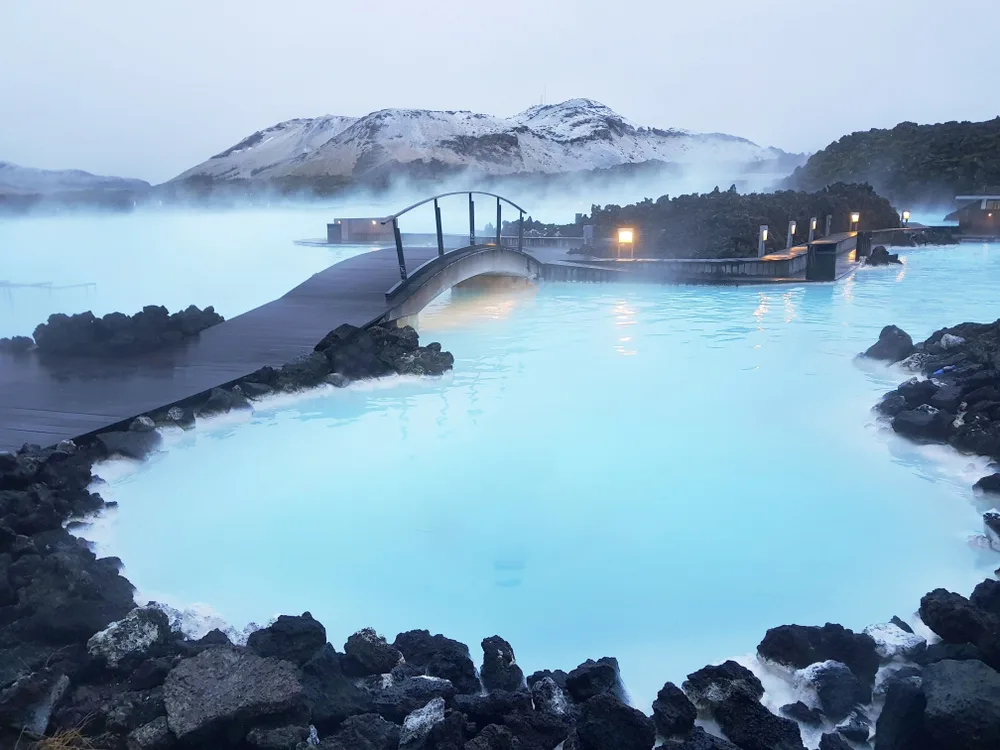
Jacksoo999/Shutterstock
The least busy time to visit Iceland is during the off-season. Iceland has two off-season times, including September to November and January to May.
If you’re visiting Iceland during the off-season, you will find fewer people at the Blue Lagoon. You can stop at exquisite restaurants for a multi-course meal without waiting for hundreds of visitors to finish their meals.
Aside from the time of year, the least busy time of day to visit the Blue lagoon is early in the morning when it first opens. The early morning hours are a great time to relax in the water before venturing out to your next adventure of the day.
On the other hand, evenings are also a less busy time of day to visit the Blue Lagoon. After you’ve spent the day hiking, touring glaciers, or snowmobiling, you can shower before relaxing in the calming water and hydrating your skin after a long day.
Also, there are varying days of the week that are less busy than others. However, the weekend will always be the busiest day of the week because everyone in Iceland wants to relax at this coveted site.
However, Tuesdays and Wednesdays are usually the least busy weekdays throughout the year.
Worst Time to Visit Blue Lagoon, Iceland
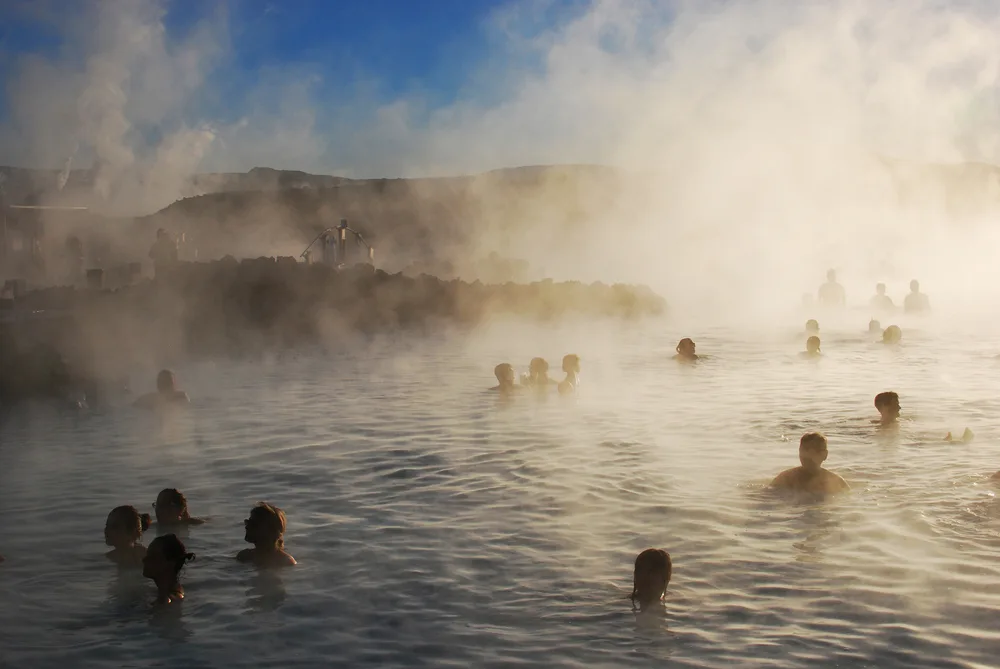
Rui Serra Maia/Shutterstock
Tourists are drawn to Iceland during the summer, so the worst time to visit the Blue Lagoon is between June and August. However, if you visit during the summer, you’ll be able to enjoy temperatures as high as 77 degrees in July and August and 54 degrees in June.
If you’re planning on visiting during the summer, you must prepare for long lines and an overflow of people in the lagoon.
You’ll learn that summer in Iceland has long days and warmer temperatures. However, you might not be comfortable in warm water when the weather is warm.
Additionally, the weather in Iceland is the most unpredictable in the world. You may be enjoying a warm, sunny day in the summer, which becomes a thunderstorm five minutes later. The potential rain could ruin your experience in the geothermal spa.
Travelers should expect large crowds at the Blue Lagoon nearly all hours during the day, especially on weekends.
However, guests can venture to the Retreat Lagoon because it’s less accessible than the main pool, and many people prefer the convenience of the Blue Lagoon. In addition, the Retreat Lagoon is between volcanic rocks and tall cliffs, providing a different viewing experience.
Frequently Asked Questions
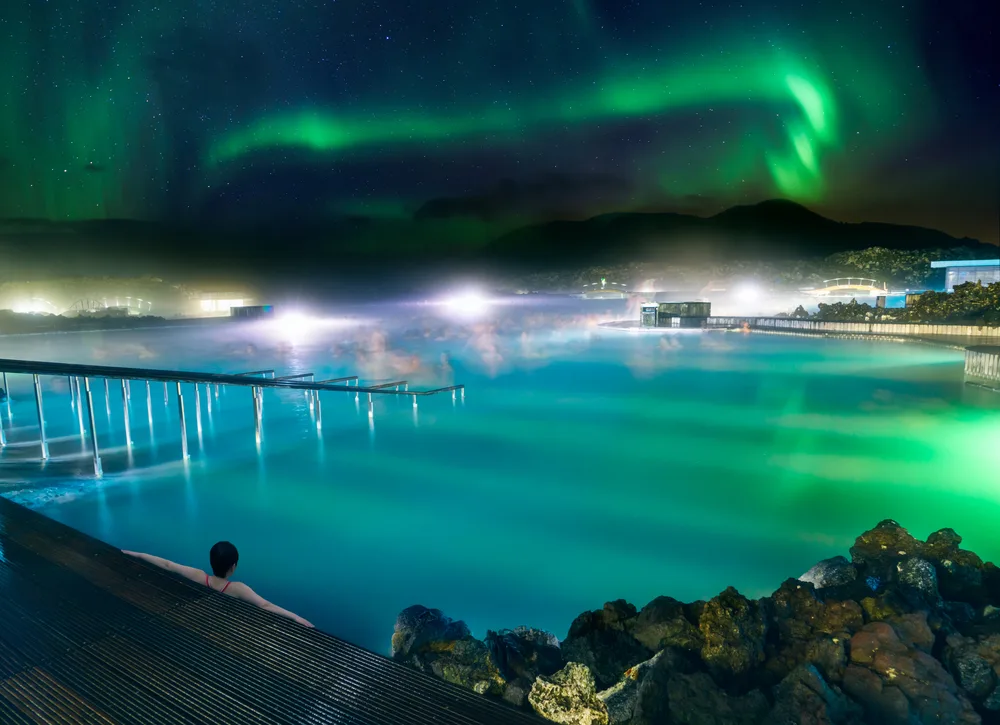
Ken Phung/Shutterstock
Are you still wondering about the Blue Lagoon? Here are a few frequently asked questions people have about the Blue Lagoon:
How hot is the water in the Blue Lagoon?
The water temperature differs depending on where you decide to stand. But, overall, the water temperature remains between 98.6 and 104 degrees.
How deep is the Blue Lagoon?
The maximum depth of the Blue Lagoon is 5.2 feet. However, the edge of the lagoon is shallower to protect children and adults who can’t swim.
What effect does Blue Lagoon water have on hair and skin?
The Blue Lagoon water moisturizes the skin because the water is naturally infused with silica, algae, and mineral salt.
The Blue Lagoon water is great for the scalp. However, the minerals in the water are similar to seawater, so they can leave your hair tangled. If not properly washed out, it can have negative long-term effects on hair.
How can you get to Blue Lagoon?
Public buses have round-trip drop-offs at the Blue Lagoon from Reykjavik daily. You can also take a taxi from Reykjavik. If you’ve rented your car, the Blue Lagoon is a 50-minute drive from Reykjavik.
How long do people spend in the Blue Lagoon?
Most people spend about two hours in the water to soak in the minerals and enjoy the water’s warmth. However, after your soak, you can dine at one of Blue Lagoon’s restaurants and then go back into the water for round two.
Overall, people spend between four and six hours in the Blue Lagoon. How long you enjoy the Lagoon is a matter of personal preference and planning.
So, When Should You Visit the Blue Lagoon in Iceland?
There’s never a bad time to visit the Blue Lagoon in Iceland and enjoy an otherworldly experience. However, certain times of the year make your trip to the Blue Lagoon unforgettable.
Overall, we’ve found that the best time to visit the Blue Lagoon would be during the winter so you can escape the cold and soak in the warm water. Aside from the weather, you’ll be in the Blue Lagoon with fewer crowds, lower prices, and a better chance to see the Northern Lights.
Iceland is known for dozens of natural wonders, but the Blue Lagoon is the ideal destination during any month of the year. So what are you waiting for — book your trip today!



